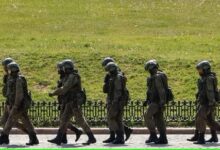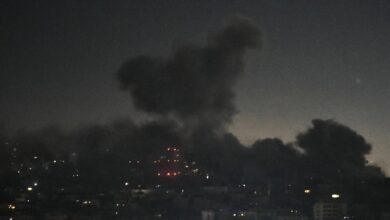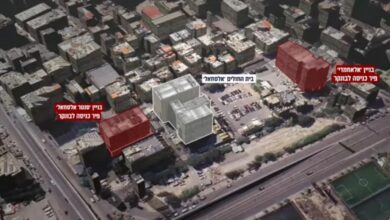After Defects In USAF Jets Were Discovered, Israel Air Force Grounded Its F-35 Fleet

- The propellant is ignited by magnesium powder in the cartridge
- According to Air Force Times, as of Wednesday, approximately 2,700 F-35 ejection seat cartridges had been tested, with only three failures discovered.
The Israel Air Force has suspended training flights due to a problem with the ejection seats in the US military’s F-35 Joint Strike Fighter fleet.
After the United States military grounded its F-35 Joint Strike Fighter fleet due to an issue with the ejection seats, the Israel Air Force will suspend training flights for its squadrons of F-35 Adir stealth fighter jets.
IAF Chief Maj.-Gen. Tomer Bar made the decision Saturday night. The entire fleet will be evaluated in the coming days, with two planes examined per day by IAF teams equipped with Lockheed Martin equipment.
Each plane discovered to have operational ejection seats will resume flight. Only with a special authorization from Bar will the planes continue to fly missions during the evaluations.
“The examinations must be strict and thorough in order to return the fleet to full competence while maintaining a high safety standard,” Bar said, according to an IDF Spokesperson’s Unit statement.
The jets were grounded due to a faulty cartridge-actuated device inside the ejection seat, which would prevent the pilot from safely blasting out of the aircraft during an emergency.
The IDF said on Saturday that “the air force received information about a safety finding in the ejection seats in the F-35 array that is assessed as low risk,” according to the IDF Spokesperson’s Unit, adding that “a directive was received to conduct tests over the next 90 days.”
The military went on to say that “Israel was coordinating its response with the US military and the F-35 Joint Program Office.”
Israel has 33 advanced jets in two squadrons based at Nevatim Airbase: the 116th Lions of the South Squadron and the 140th Golden Eagle Squadron. The IAF also has a third squadron for training purposes.
Because the jets have a very low radar signature, they can operate undetected deep inside enemy territory. Since their inception in 2018, the F-35 squadrons have conducted missions over the Gaza Strip as well as as part of Israel’s “war between the wars” campaign.
The fleet recently completed a week-long international exercise called “Lightning Shield” with Italian F-35 pilots.
Lockheed Martin said in a statement that it “continues to work closely with the Joint Program Office and customers to ensure safe and effective operations for the F-35 fleet.” To support recent JPO and service direction, we are assisting with seat inspections where appropriate.”
What was the problem?
Martin-Baker, the seat’s manufacturer, stated that the issue was discovered in April when “an anomaly was discovered” with one of the devices in the seats of an F-35 at Hill Air Force Base in Utah.
The statement continued, “This was quickly traced back to a gap in the manufacturing process, which was addressed and changed.”
According to Air Force Times, a maintainer discovered “that an ejection cartridge felt suspiciously light” during an inspection, and “after a closer look, the cartridge turned out to be missing its explosive charge that would lift someone to safety.”
The propellant is ignited by magnesium powder in the cartridge.
“ACC units will conduct a stand-down on July 29 to expedite the inspection process out of an abundance of caution.” According to Air Combat Command spokeswoman Alexi Worley, “based on data gathered from those inspections.” “ACC will decide whether or not to resume operations.”
According to Air Force Times, as of Wednesday, approximately 2,700 F-35 ejection seat cartridges had been tested, with only three failures discovered.







Facebook Comments